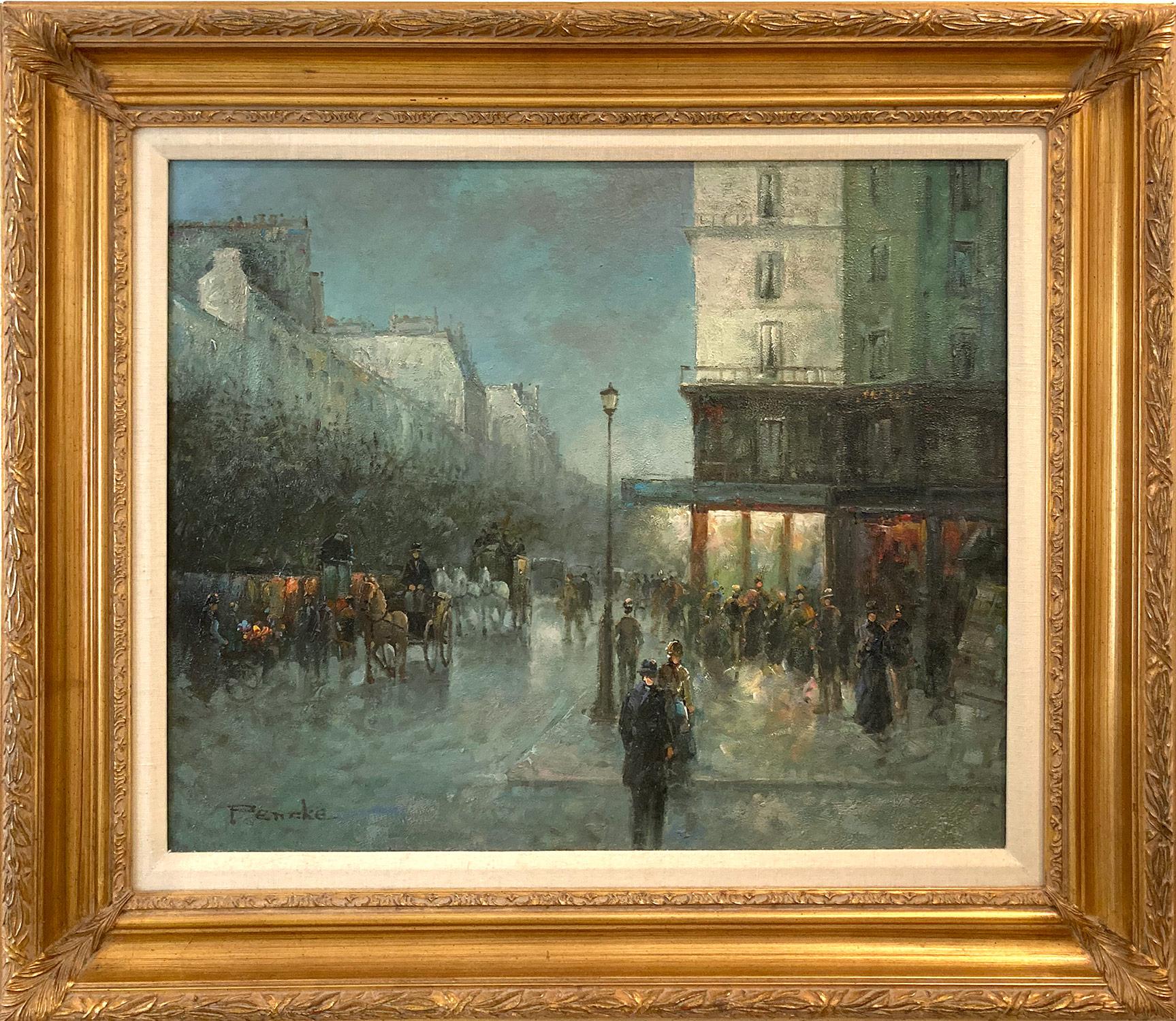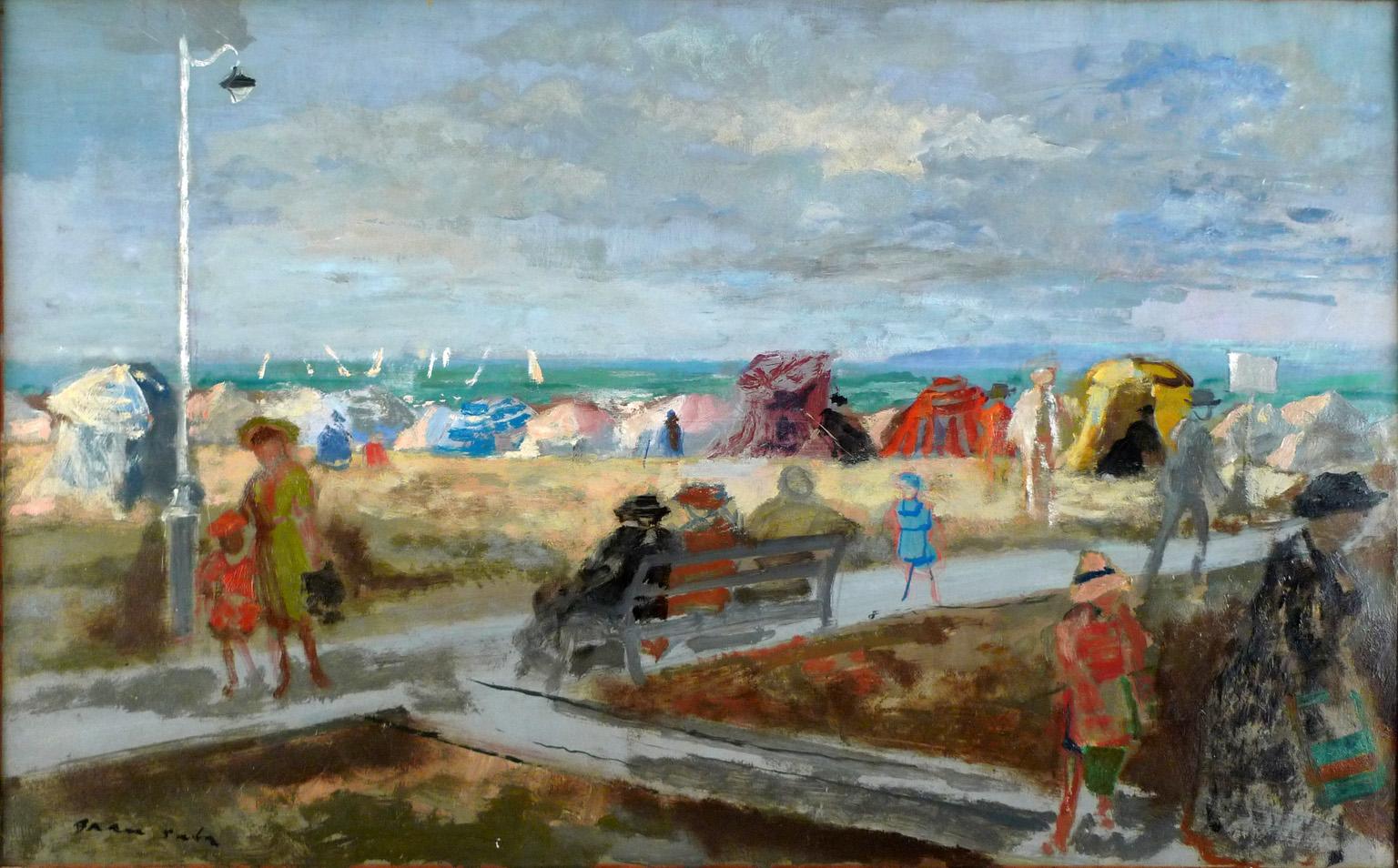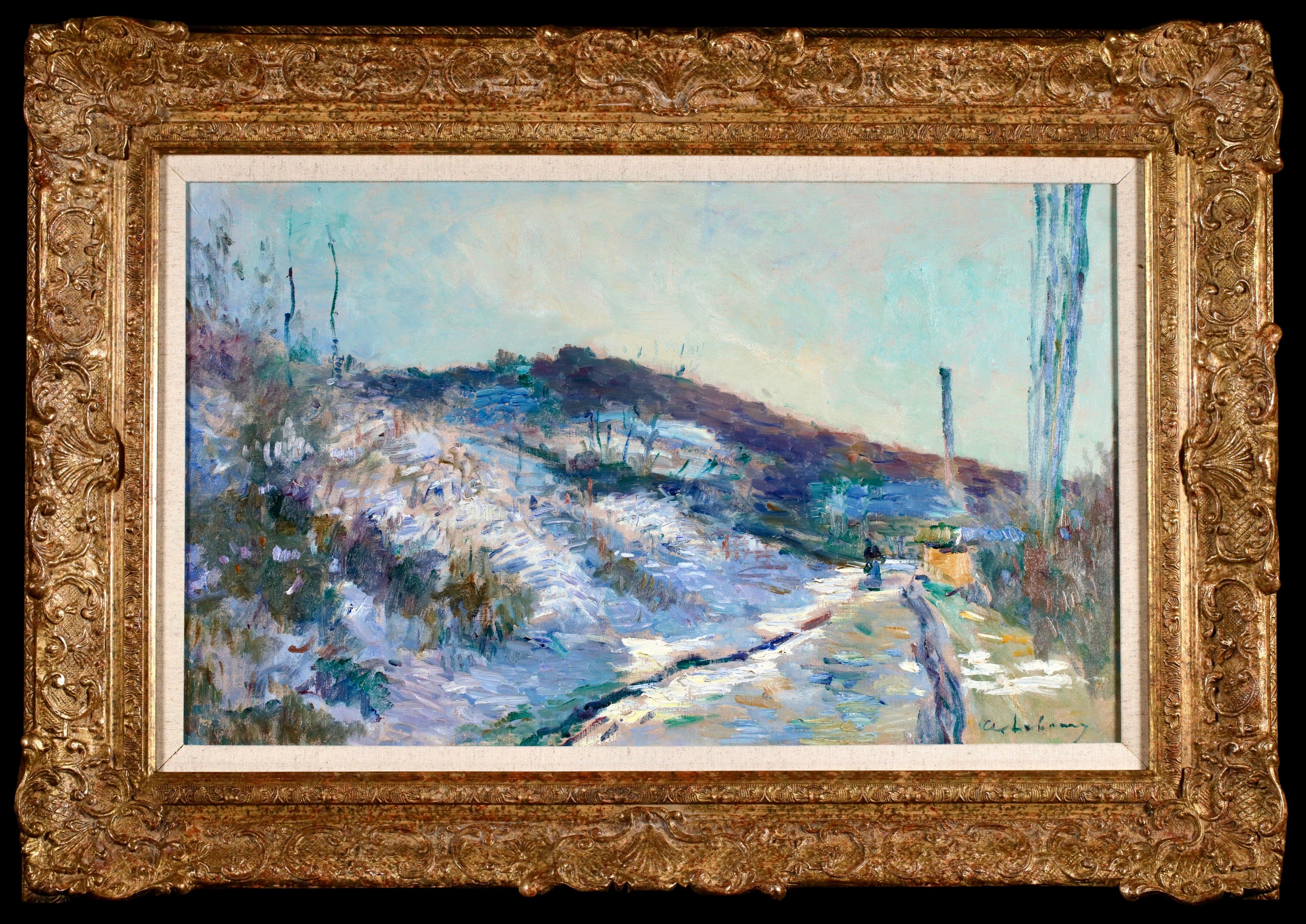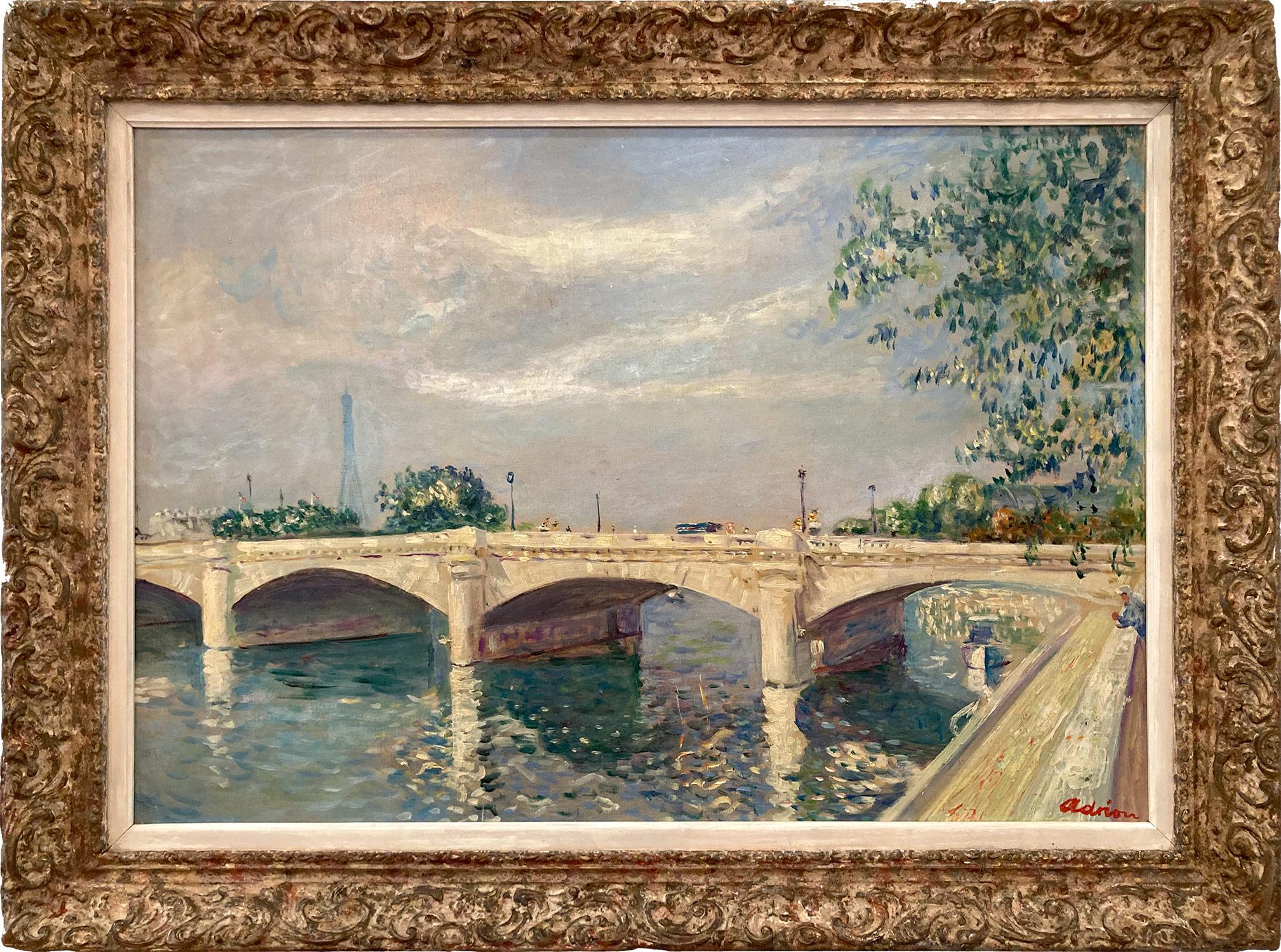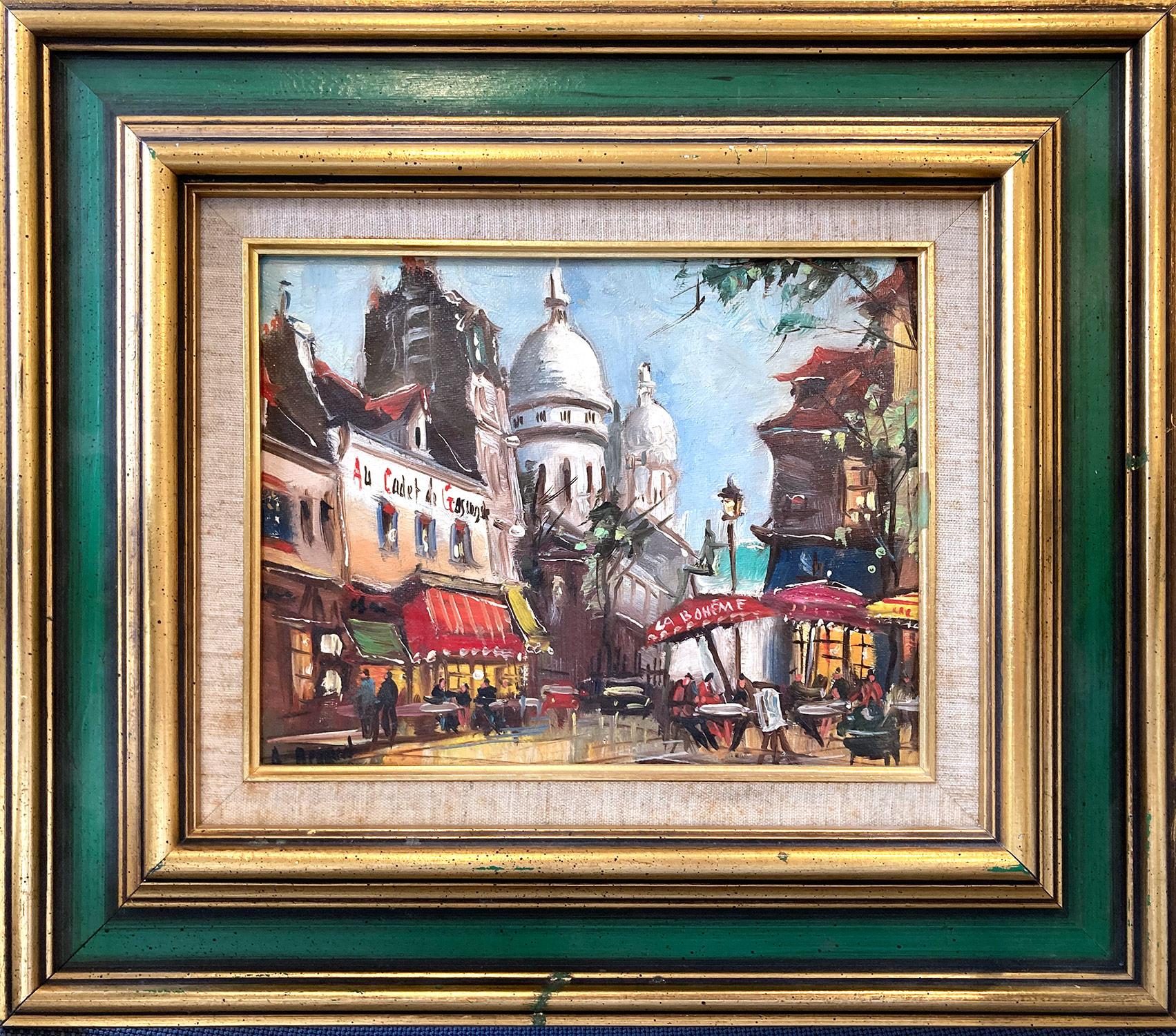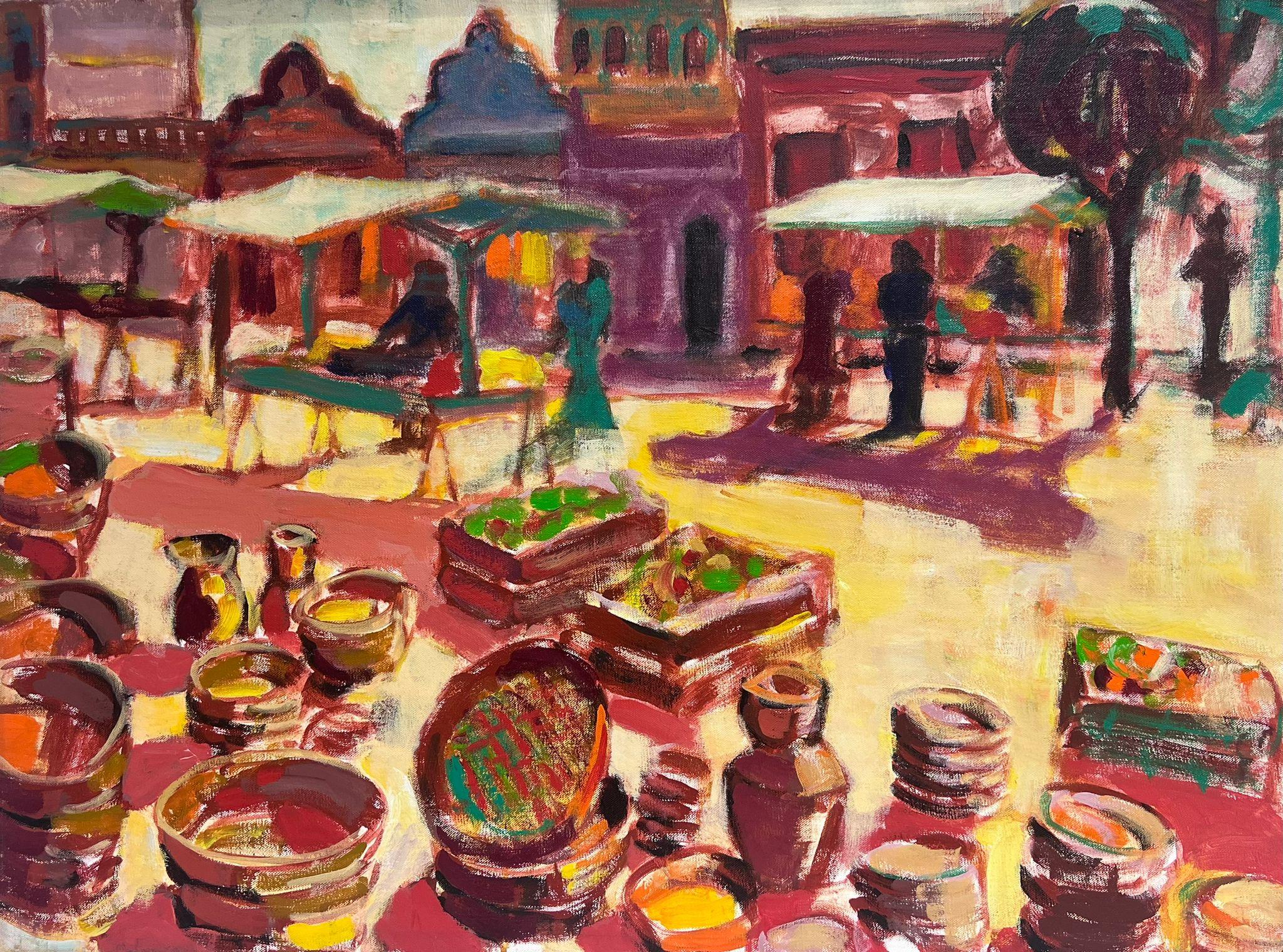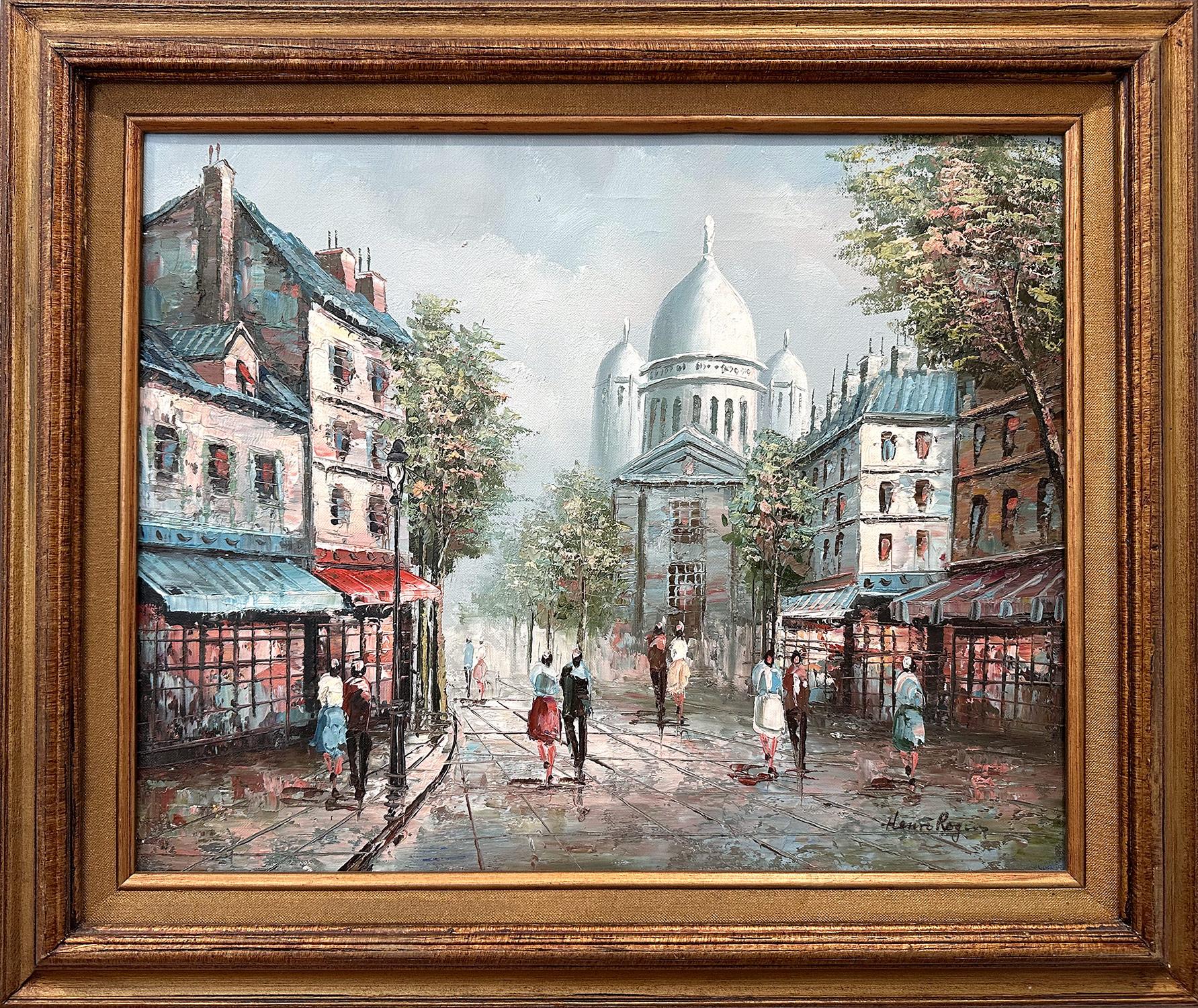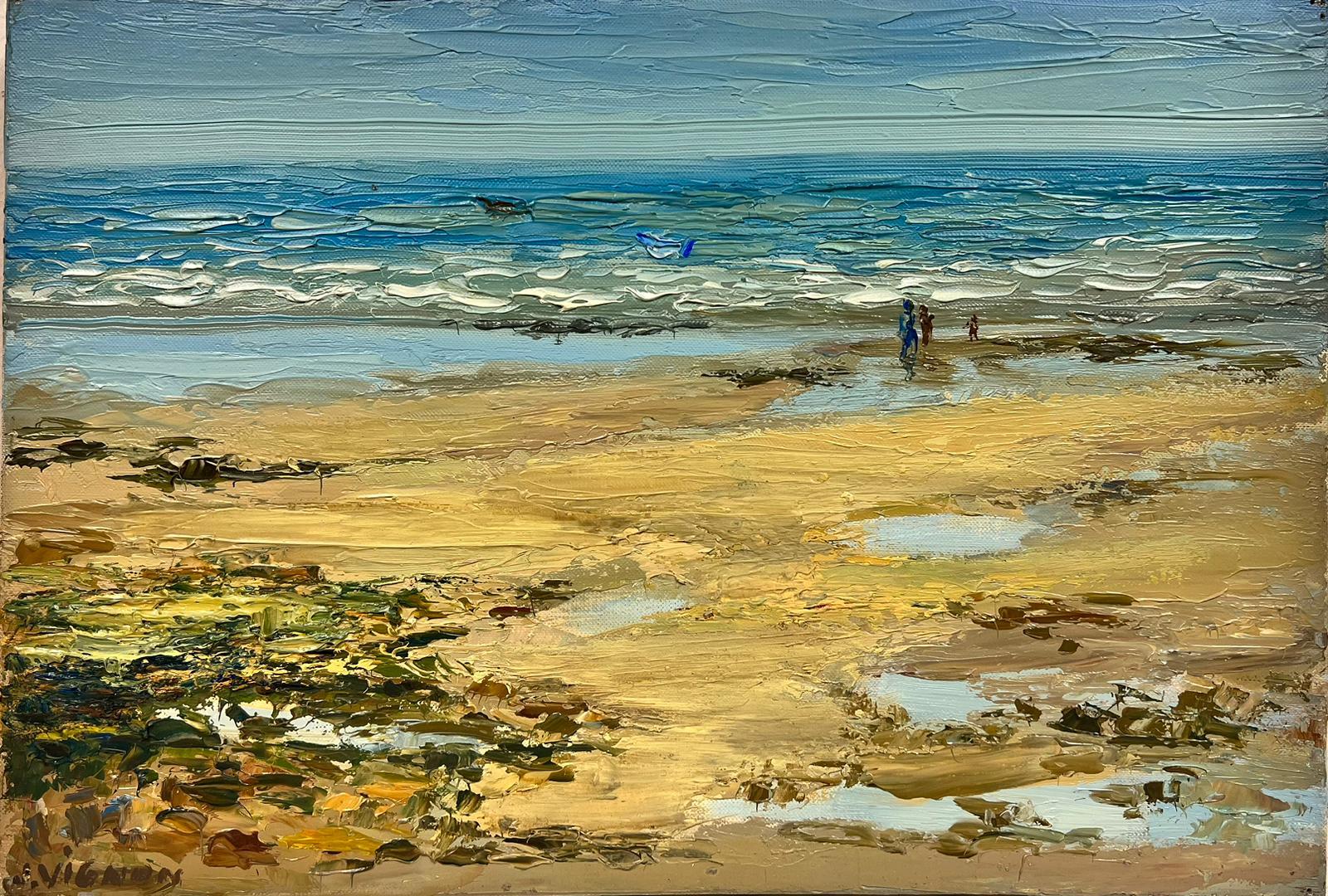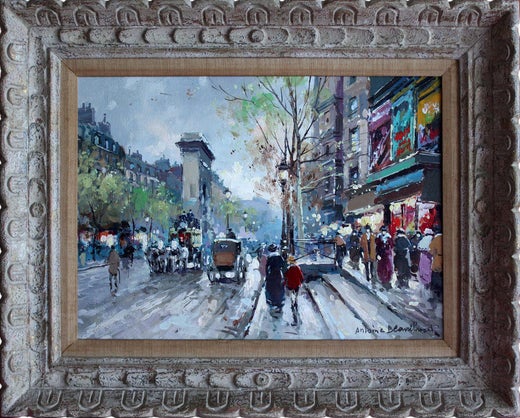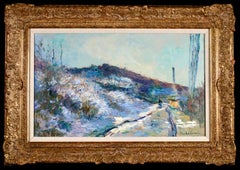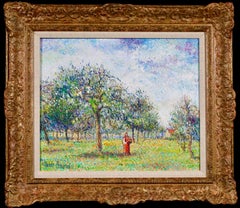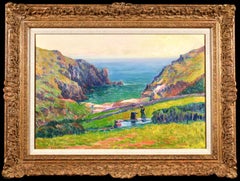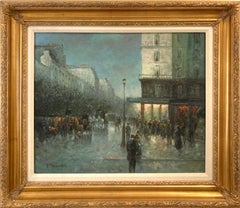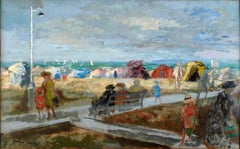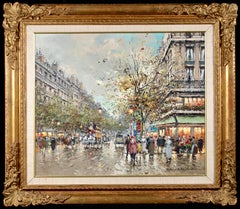
Boulevard Haussmann - Post Impressionist Painting by Antoine Blanchard
Want more images or videos?
Request additional images or videos from the seller
1 of 19
Antoine BlanchardBoulevard Haussmann - Post Impressionist Painting by Antoine Blanchard1970
1970
Price:$6,000
$8,150.33List Price
About the Item
- Creator:Antoine Blanchard (1910-1988, French)
- Creation Year:1970
- Dimensions:Height: 27 in (68.58 cm)Width: 29 in (73.66 cm)
- Medium:
- Movement & Style:
- Period:
- Condition:Very good condition.
- Gallery Location:Marlow, GB
- Reference Number:Seller: LFA01671stDibs: LU415311507342
Antoine Blanchard
Antoine Blanchard (1910-1988) was a French oil painter renowned for his impressionist cityscapes of beautiful Paris.
About the Seller
5.0
Gold Seller
Premium sellers maintaining a 4.3+ rating and 24-hour response times
Established in 2001
1stDibs seller since 2016
705 sales on 1stDibs
Authenticity Guarantee
In the unlikely event there’s an issue with an item’s authenticity, contact us within 1 year for a full refund. DetailsMoney-Back Guarantee
If your item is not as described, is damaged in transit, or does not arrive, contact us within 7 days for a full refund. Details24-Hour Cancellation
You have a 24-hour grace period in which to reconsider your purchase, with no questions asked.Vetted Professional Sellers
Our world-class sellers must adhere to strict standards for service and quality, maintaining the integrity of our listings.Price-Match Guarantee
If you find that a seller listed the same item for a lower price elsewhere, we’ll match it.Trusted Global Delivery
Our best-in-class carrier network provides specialized shipping options worldwide, including custom delivery.More From This Seller
View AllLe Route d'Hondouville - Post Impressionist Landscape Oil by Albert Lebourg
Located in Marlow, Buckinghamshire
Signed oil on canvas landscape circa 1890 by French post impressionist painter Albert Charles Lebourg. The work depicts a view of a road to Hondouville, a commune in nothern France, ...
Category
1890s Post-Impressionist Landscape Paintings
Materials
Canvas, Oil
Winter Moonlight - Signed Landscape Oil Painting by Max Clarenbach
Located in Marlow, Buckinghamshire
Signed oil on canvas landscape circa 1930 by German post impressionist painter Max Clarenbach. The work depicts a winter scene, with snow laying thick on the ground. To the foregroun...
Category
1930s Post-Impressionist Landscape Paintings
Materials
Canvas, Oil
Au Verger - Post Impressionist Landscape Oil By Hugues Claude Pissarro
Located in Marlow, Buckinghamshire
Signed and titled oil on canvas circa 1990 by French painter Hugues Claude Pissarro. The piece depicts a woman in a red dress collecting apples in an orchard.
Signature:
Signed lowe...
Category
1990s Post-Impressionist Landscape Paintings
Materials
Canvas, Oil
Porte La Motte - Brittany - Post Impressionist Landscape Oil by Jules Le Ray
Located in Marlow, Buckinghamshire
Signed, titled and dated oil on canvas figures in landscape by post-impressionist painter Jules Le Ray. The piece depicts two women on a top of a cliff overlooking the port of La Mor...
Category
1920s Post-Impressionist Landscape Paintings
Materials
Canvas, Oil
Port of Le Havre & Sainte-Adrese- Post Impressionist Seascape Oil - Othon Friesz
By Achille-Émile Othon Friesz
Located in Marlow, Buckinghamshire
Signed and dated oil on canvas seascape by French post impressionist painter Achille-Emile Othon Friesz. The piece depicts a view of Le Havre, a port city in Normandy, France, locate...
Category
1920s Post-Impressionist Landscape Paintings
Materials
Canvas, Oil
Montmartre Place Emile Goudeau- Post Impressionist Landscape Oil - Elisee Maclet
By Élisée Maclet
Located in Marlow, Buckinghamshire
Signed landscape oil on canvas by French post impressionist painter Elisee Maclet. The work depicts a view of the buildings in the Place Emile Goudeau in the Monmartre district of Pa...
Category
1920s Post-Impressionist Landscape Paintings
Materials
Oil, Canvas
You May Also Like
Las Ramblas Barcelona Spain oil on canvas painting spanish urbanscape
Located in Barcelona, Barcelona
Title: Rambla de Barcelona
Artist: Jordi Curós Ventura (1930-2017)
Technique: Oil on canvas
Dimensions: 28.7 x 23.6 in (73 x 60 cm)
Support: Canvas
Framing: Unframed
Style: Expressiv...
Category
1980s Fauvist Figurative Paintings
Materials
Canvas, Oil
"Boulevard a Paris At Twilight" Impressionist Street Scene Oil Painting Canvas
Located in New York, NY
A beautiful oil on canvas painting by the French artist, Te Pencke. Pencke was a Parisian painter known for his colorful cityscapes depicting the times of his generation. His work is...
Category
Mid-20th Century Post-Impressionist Landscape Paintings
Materials
Canvas, Oil
"Plage de Trouville" 1953, 20th Century oil on canvas by Emilio Grau Sala
By Emilio Grau Sala
Located in Madrid, ES
EMILIO GRAU SALA
Spanish, 1911 - 1975
PLAGE DE TROUVILLE
signed Grau Sala (lower left)
signed again, located & dated "Grau Sala, Trouville, 1953" on the reverse
oil on canvas
15 X 24 inches (38 X 61 cm.)
framed: 24-1/2 X 33-3/4 inches (62.5 X 85.5 cm.)
PROVENANCE
Private French Collection
Emilio Grau Sala came from a family of artists. He was born in Barcelona in 1911 and his father, a good cartoonist, had been one of the promoters of the "Salon des Humanistes" and made his exhibitions normally in the Parés Hall.
His first works were exhibited at the Salon des Independents, in the years 1930-33.
Grau Sala was essentially a Mediterranean painter, son of post-impressionism and enriched with French painting of the last fifty years.
Grau Sala lived and absorbed all the avant-garde movements that broke through in Paris, but never adhered to any. Creating your personal style. His pictorial lyricism and naturalism superimposed the evotative and sensitive quality of the image to any other concern. In 1953 Grau Sala spends his first summer in Honfleur becoming one of the most active Honflerian painters. Honfleur forms a coast triangle next to Deauville and Trouville, and in that August of 53, Grau Sala pinto is an elegant beach, which at that time met French and European high society.
His works can be found in the Museums of the Villa de Paris, L'Ile de France Museum, at the Château de Sceaux, Honfleur Museum, La Rochelle Museum, Barcelona Museum, Tossa de Mar...
Category
1950s Post-Impressionist Landscape Paintings
Materials
Canvas, Oil
Original Triptych-Autumn in London-plein air-British Awarded Artist -Large Oils
Located in London, GB
Nothing beats a British autumn. Autumn in London Series is one of the most personal projects of Shizico Yi; the sensitive colours, her signature expressive and confidant brushstrokes...
Category
2010s Post-Impressionist Landscape Paintings
Materials
Gesso, Oil, Acrylic, Stretcher Bars, Canvas
"Pont De La Concorde" Post-Impressionist Oil Painting Across the Seine in Paris
By Lucien Adrion
Located in New York, NY
This work by Lucien Adrion is a wonderful representation of his impressionistic works depicting the "Pont De La Concorde" bridge across the Seine in Paris with the Eiffel tower in the distance. Using a bright palette of colors, Adrion executes this piece with much attention to detail with figures and cars over the bridge and a man leaning against the edge overlooking the bright water and reflections. There is a boat lower right and we can feel the warmth of the sun contrasted with the cool breeze of the water. The figures are wonderfully executed by the artist in a very whimsical way that leaves us with an essence of fun and enjoyment from that sunny day at the Seine. As this tourist destination was a favorite of the artist to find inspiration and highly attractive subjects and compositions to represent. The piece is signed by the artist lower right and titled on verso, it comes housed in a French giltwood frame with hanging wire on verso ready to be displayed.
Art measures 20 x 29 inches
Frame measures 25.5 x 34.5 inches
Lucien Adrion was born May 25, 1889 in Strasbourg, France. He was a French Post-Impressionist painter, draftsman, and printmaker known for his depictions of the French countryside and beaches, as well as Parisian life including landscape, still life, figure, and landmarks paintings. He began his initial studies in Strasbourg as a technical draughtsman. In 1907, at the age of 18, he left his hometown Strasbourg and traveled to Paris, where he found employment in a large drafting company to work as a fashion illustrator. Adrion changed his mind upon arrival and rather than working for a large company, he decided to peruse his artistic career by traveling to London, Munich, and Frankfurt. As the World War broke out he had to go to Berlin, where he studied as an engraver with Hermann Struck, who was also the teacher of Marc Chagall. He remained in Berlin until the war ended and after the demobilization, Lucien would study engraving under Franz Ritter von Struck...
Category
Early 20th Century Post-Impressionist Landscape Paintings
Materials
Canvas, Oil
"Place Du Tertre " Impressionist Oil Painting with Figures in Parisian Village
Located in New York, NY
This painting is a tremendously vivid and alive street scene from Paris in the 20th Century, depicting The Place du Tertre. This square is in the 18th arrondissement of Paris, France. Only a few streets away from Montmartre's Basilica of the Sacré Cœur and the Lapin Agile...
Category
Mid-20th Century Post-Impressionist Landscape Paintings
Materials
Canvas, Oil
$1,600 Sale Price
20% Off
Recently Viewed
View AllMore Ways To Browse
Oil Painting Rainy Paris Street Scene
Pin Up Art
Street Art Painting Basquiat
Pop Art Palm Springs
Lip Paintings
Nude Realism
Oil Painting Christian
Horse Post
Used Newspaper Stands
Painting Of Venus
Female Expressionist Artist
Painting Of Cowboys
French Naive
Oil Painting Children Playing
Mexican Surrealist
John A Bruce
Painting Of Dolls
Red Horses Painting
